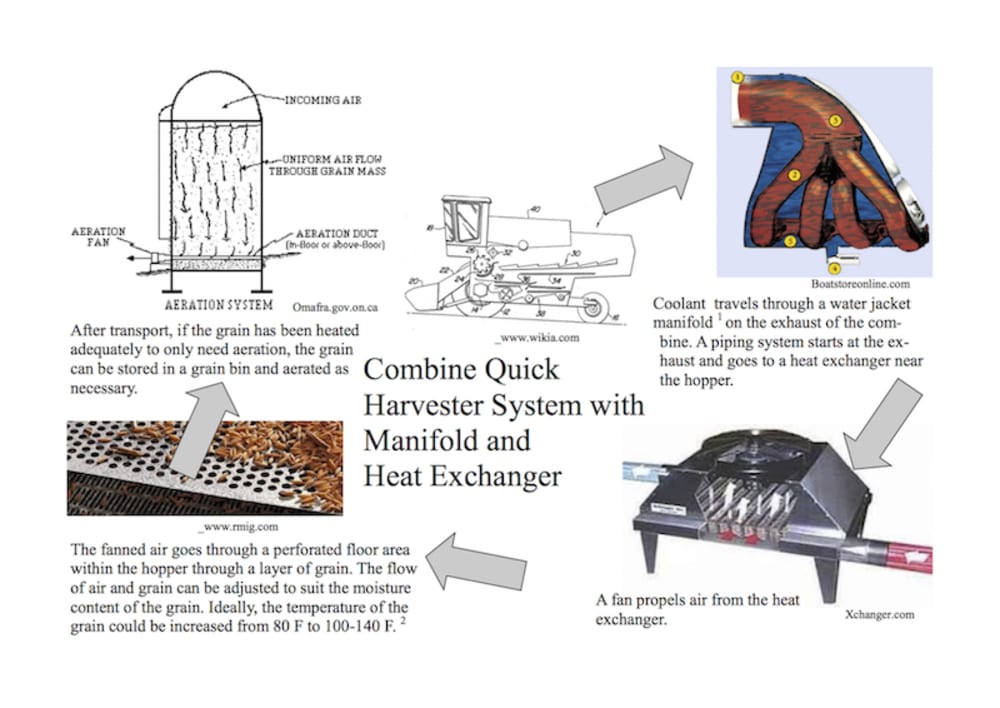The Quick Harvester System with Manifold and Heat Exchanger uses waste heat to start the grain drying process on the combine instead of post-harvest in the grain dryer. This system is more applicable in locations with combine harvesters where grain is tough at harvest. North America, Australia, Europe and some of Asia, South America and Africa is included in this market. It is applicable in the Machinery/ Automation/ Robotics and Sustainable Technologies categories.
In Canada, when grain is damp or “tough” as it is usually referred to it means the moisture content is over 14.5% or 14% for the United States. Usually “wet” wheat is over 17% moisture content and requires a grain dryer, although the Quick Harvester System would reduce the moisture content of the grain regardless of the moisture content. The Quick Harvester System would use engine heat to heat up grain as it is entering the hopper of the combine such that only aeration in the grain bin is needed before storage is complete. Heat from the exhaust pipe is transferred to a water jacket manifold similar to those seem in marine engines. The coolant is taken to a heat exchanger near the hopper where the heated air is blown through the grain as it enters the hopper. The airflow rate and grain flow rate can be adjusted to heat the grain to 100-140 oF for seed grain and higher if the grain is not used for seed.
A system like this would significantly reduce the need for swathing and drying grain in the field since the drying could be done in the combine and grain bin. This system would not add much cost to a new combine and could be added to a used combine at an affordable price.
Like this entry?
-
About the Entrant
- Name:Janet Young
- Type of entry:teamTeam members:Janet Young
James Young - Software used for this entry:Solid Edge, Google Chrome, Microsoft Publisher, Adobe Acrobat
- Patent status:none

